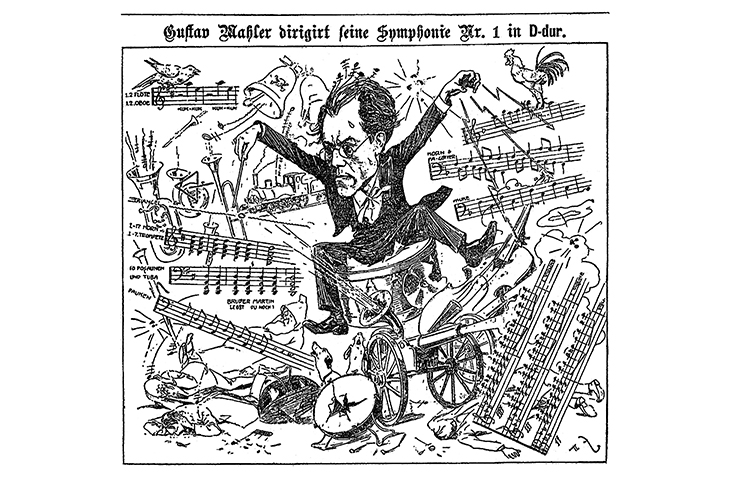When I began listening to music seriously, in about 1950, I had read about Mahler but wasn’t able to hear any — almost none of his works was available on 78s, apart from the celebrated pre-war recordings of the Ninth Symphony and Das Lied von der Erde, under Bruno Walter, and they were way beyond a teenager’s pocket. Reading about his symphonies — vast, anguished, tormented, ecstatic — I was desperate, and when I finally managed to hear that recording of the Ninth I was suitably overwhelmed, as I still am.
During the 1950s I was able, slowly, to hear, though not to get to know, the rest of his output, and responded with prepackaged ecstasy. The most shattering of my Mahler experiences was the famous Das Lied, recorded in 1952, again under Walter, with Ferrier and Patzak, a work which the composer told Walter he was afraid people would not survive — and, of course, he really hoped that they wouldn’t. To deny the tremendous power of those two works would be sheer idiocy, but what of the rest?
For nowadays Mahler is unavoidable — putting on a Mahler symphony is the surest way to fill a concert hall. A turgid account of the Second Symphony at the Proms a few years ago received the longest-ever ovation of anything performed at the festival.
Mahler said his time would come; the question now, for me, is when it will go. For the symphonies, up until the last, are all flawed, in different ways, but primarily because they peddle sentimentality as courage, heroism, defiance and piety. Furtwängler, who only conducted any of the symphonies fairly early in his career, told his second wife that when he got to the end of the Third Symphony he felt as if he had slept with a meringue in his mouth. And the Third is one of the more interesting symphonies, with its sprawling, elemental first movement. But what have the movements in between the first and the last got to do with them or each other? It’s a question you can ask of most of the symphonies; because they fail to add up to anything, they are taken to be comprehensive, to ‘contain the whole world’ as Mahler famously claimed to Sibelius. Or, if they manifestly fall apart, as the Seventh Symphony surely does, with its shockingly prolix and bombastic last movement, that shows the sheer audacity of Mahler’s vision.
It is largely because of the ramshackle, anything-might-happen-next quality of many of his works that they generate such enthusiasm — they don’t need comprehending because they can’t be comprehended. What is the Adagietto of the Fifth doing except providing a little aural relief, admittedly of an emetic kind, between the nihilistic energy of the neighbouring movements? If the greatest Dionysian art is order on the very verge of chaos, then one might say that Mahler’s is the negation of that: chaos on the verge of order — except for those two masterpieces that I began by mentioning.






Comments